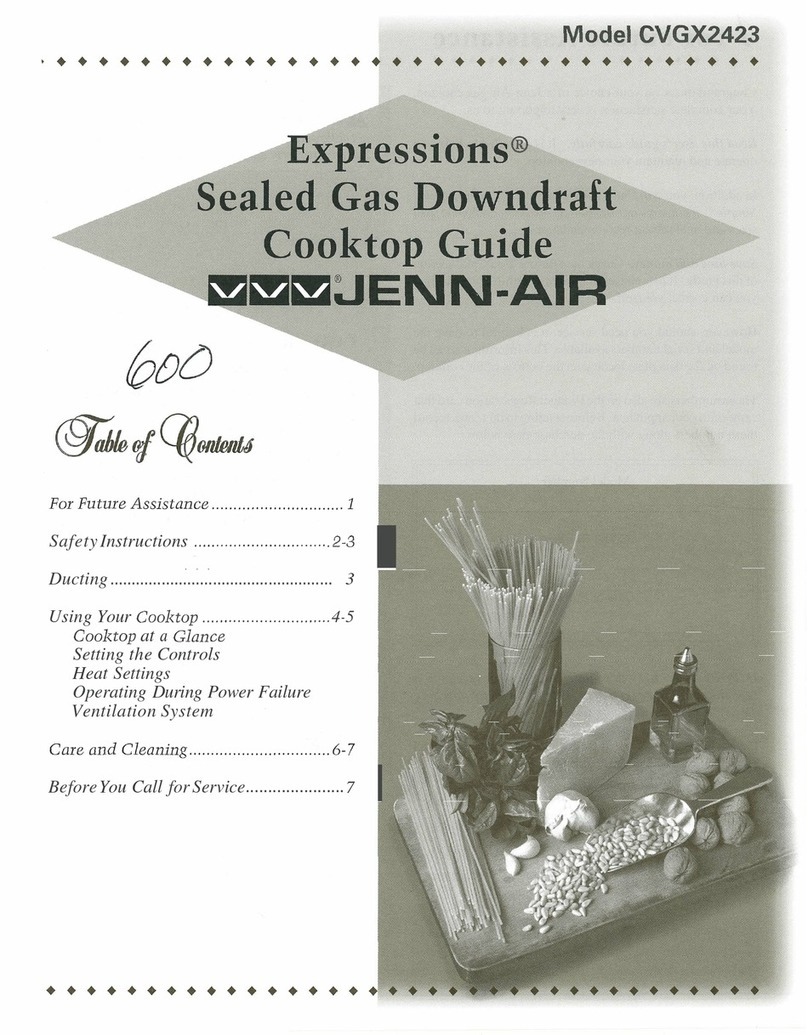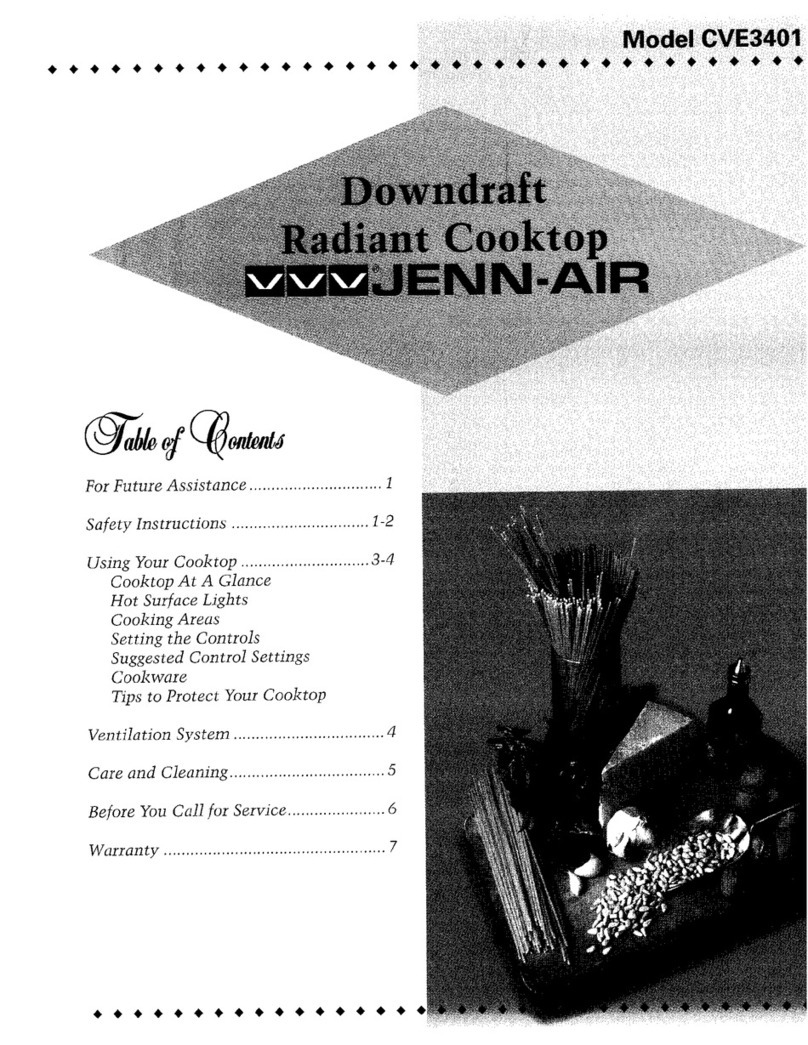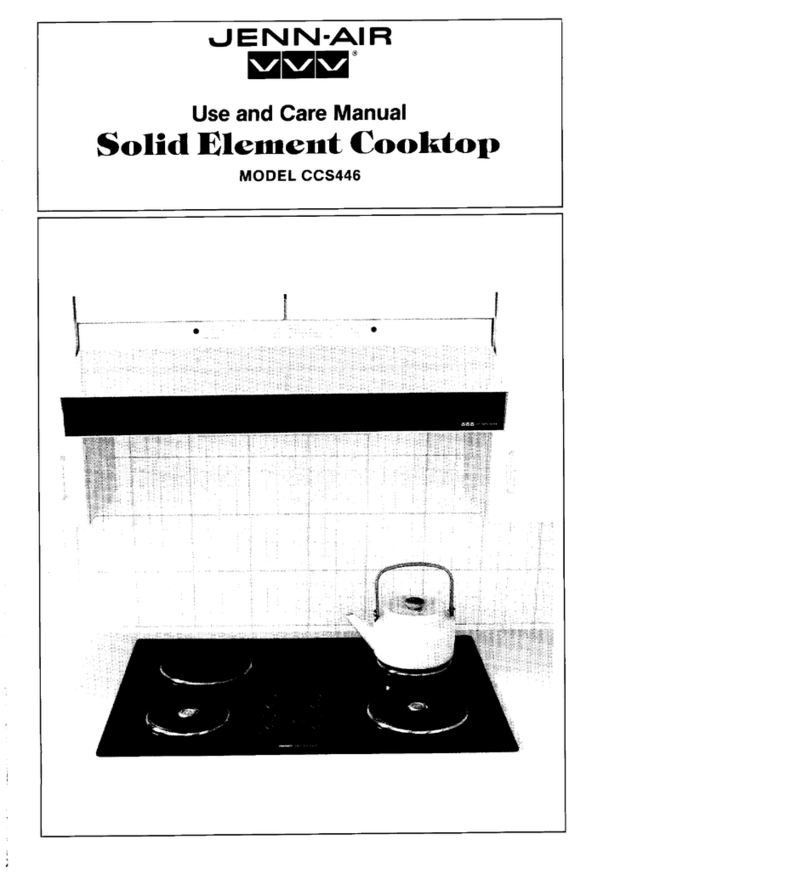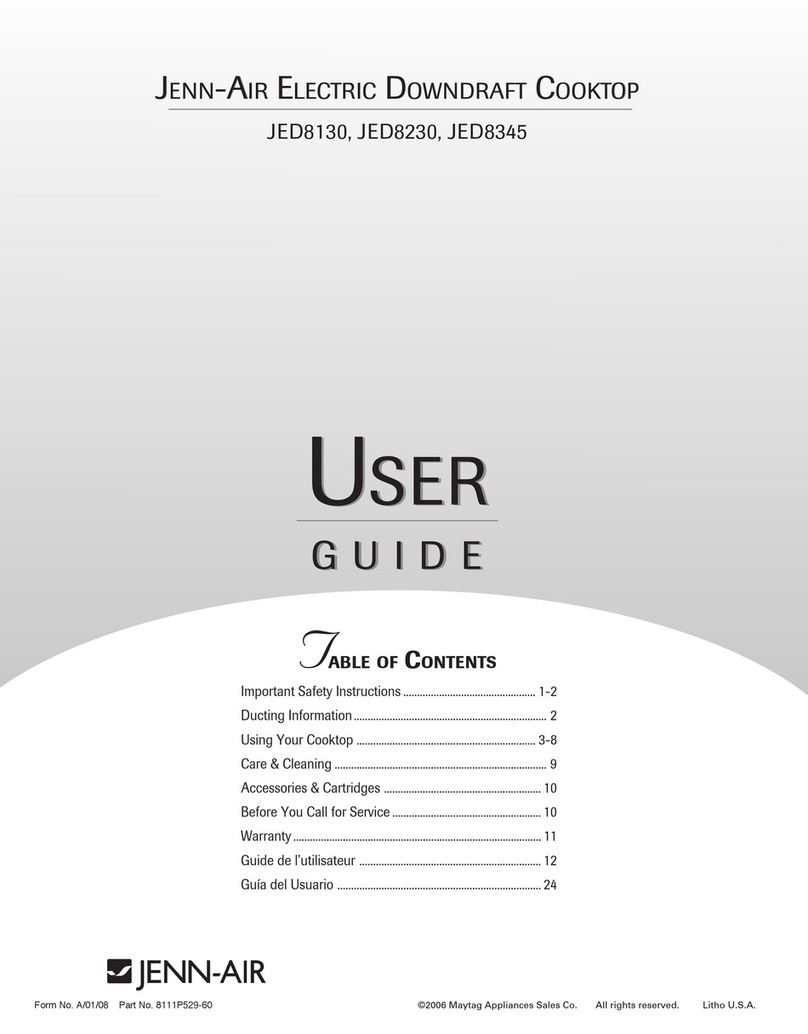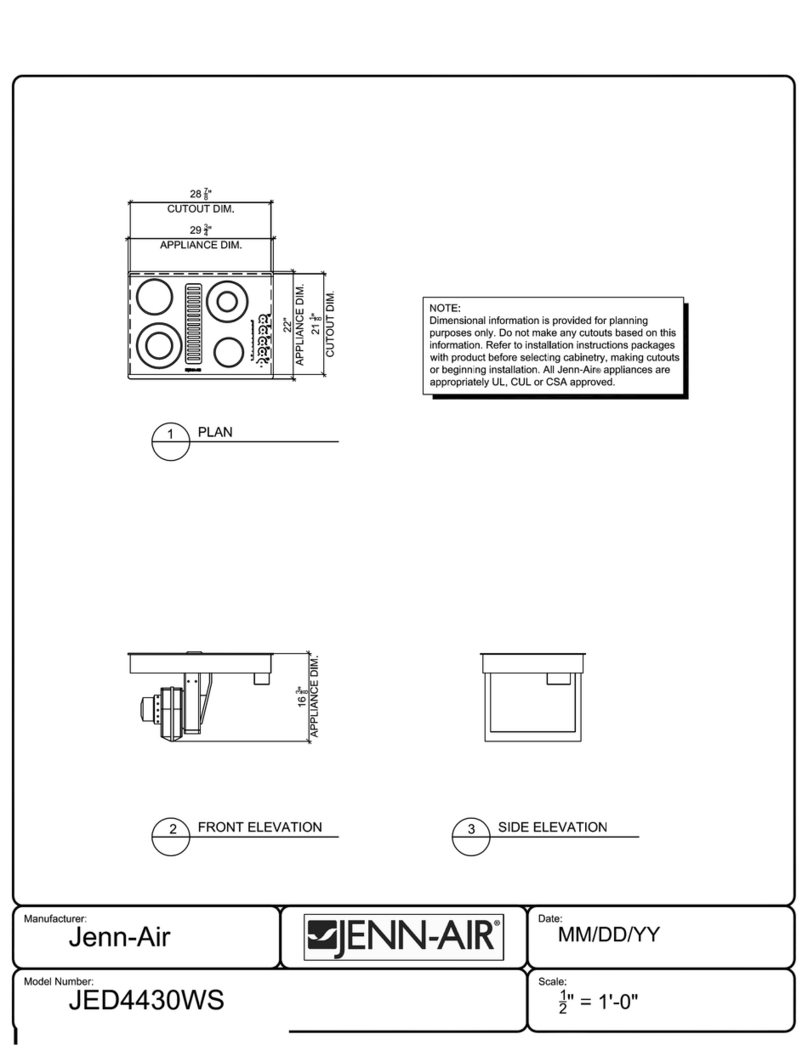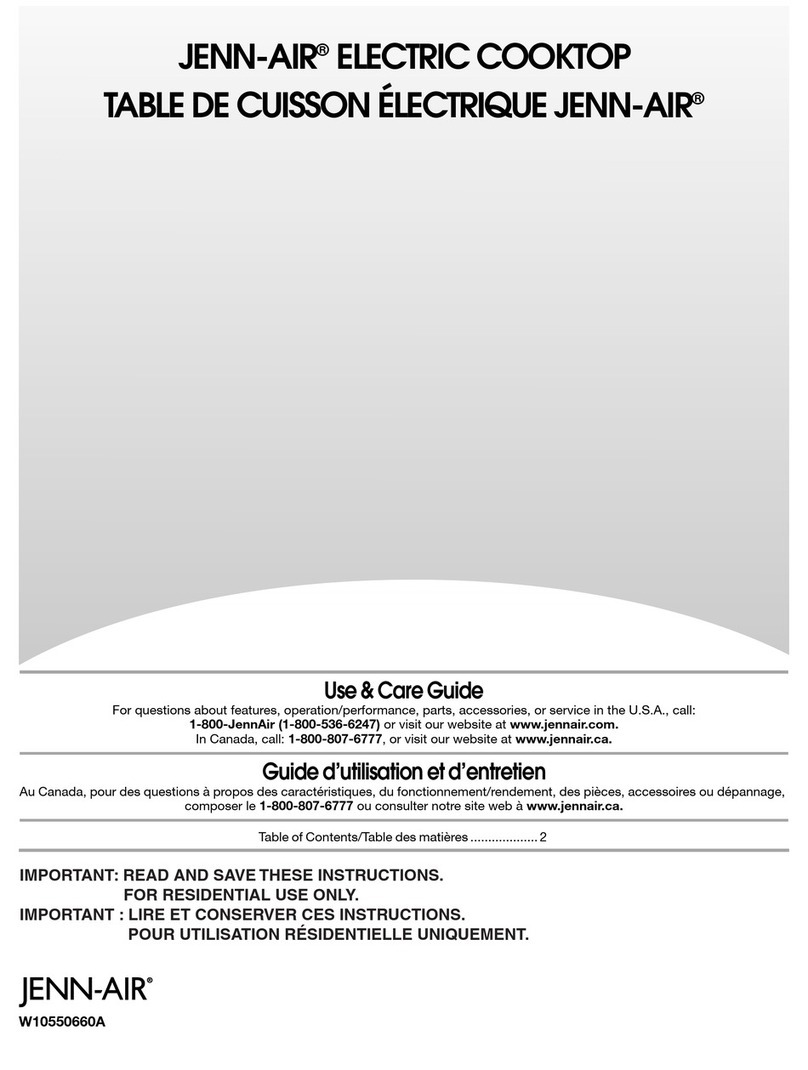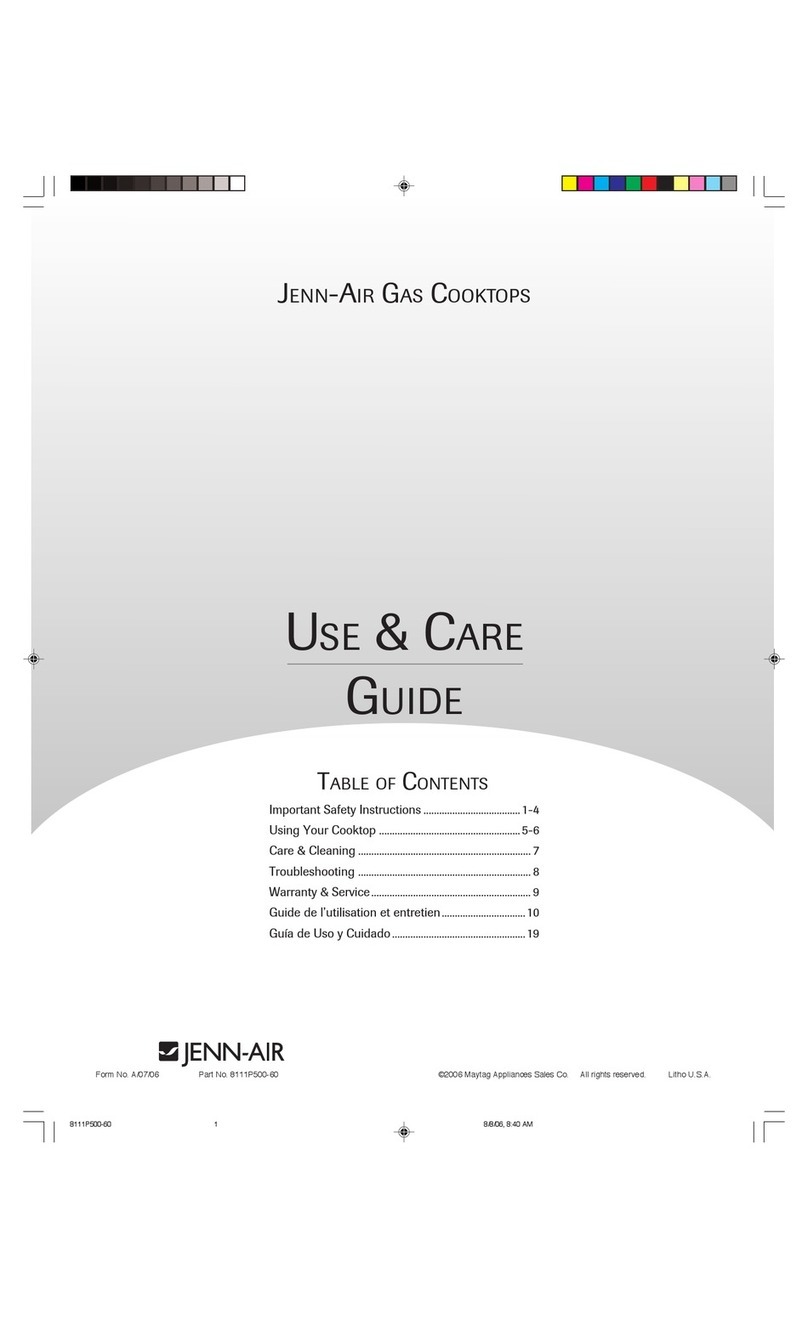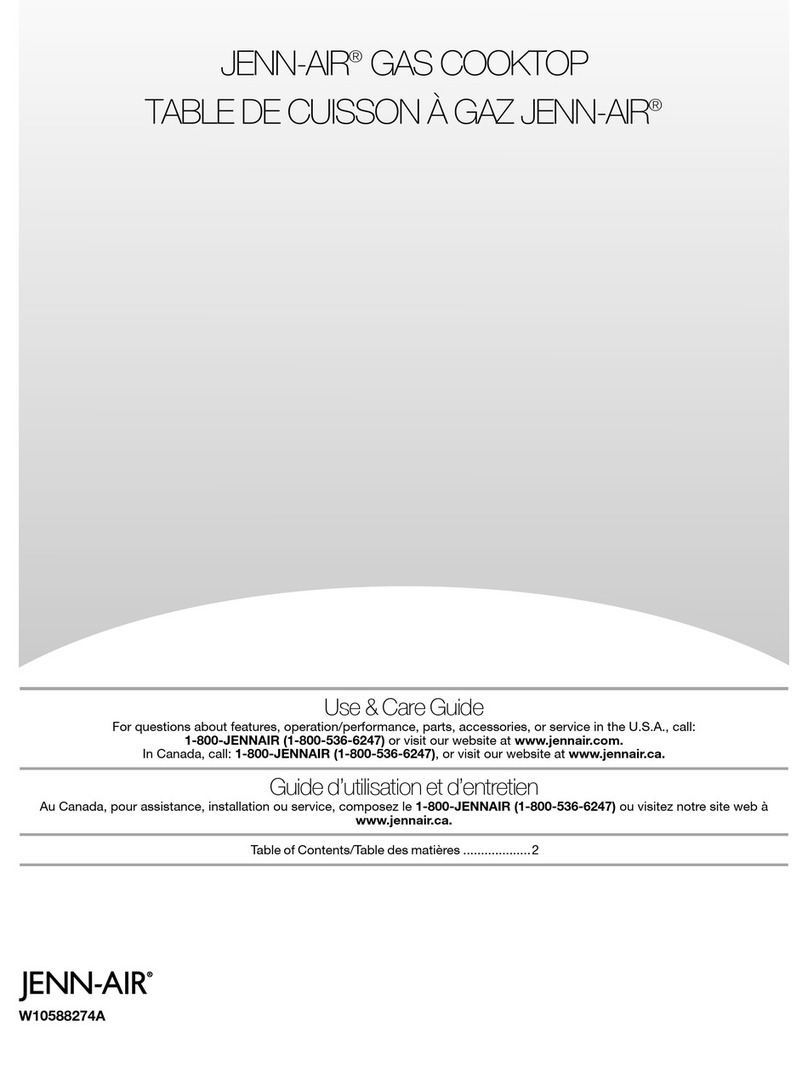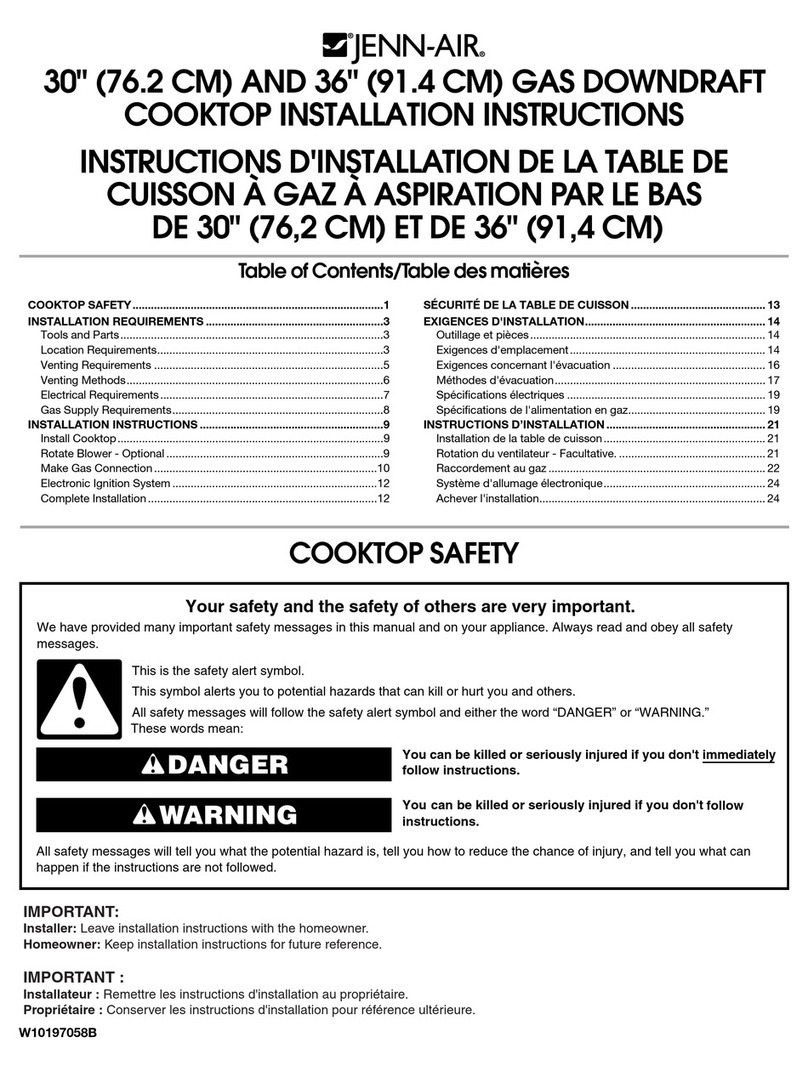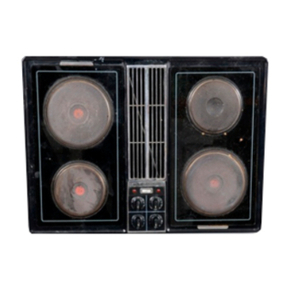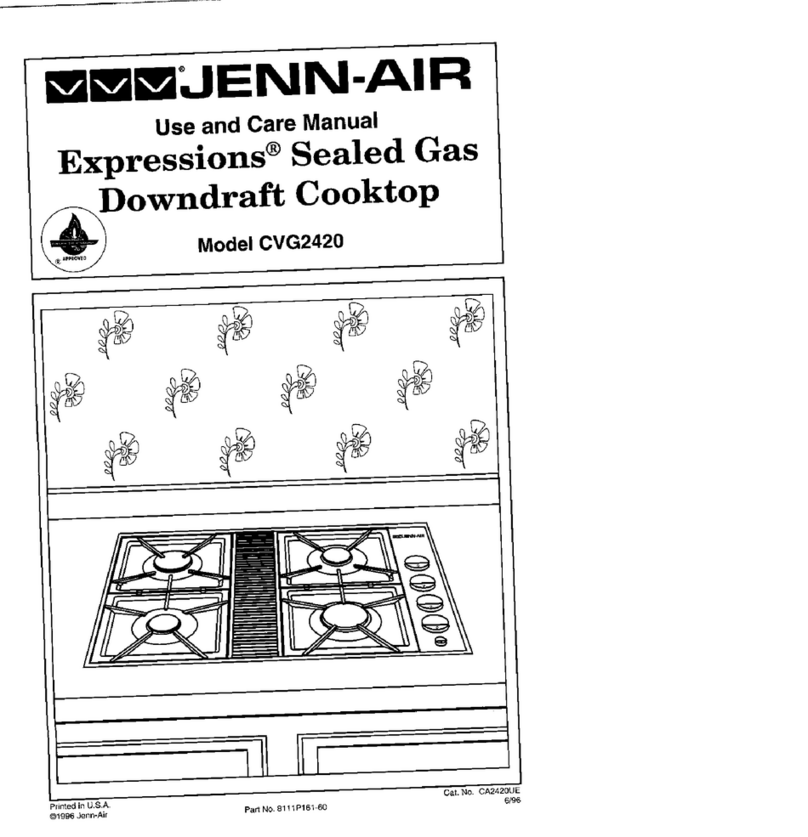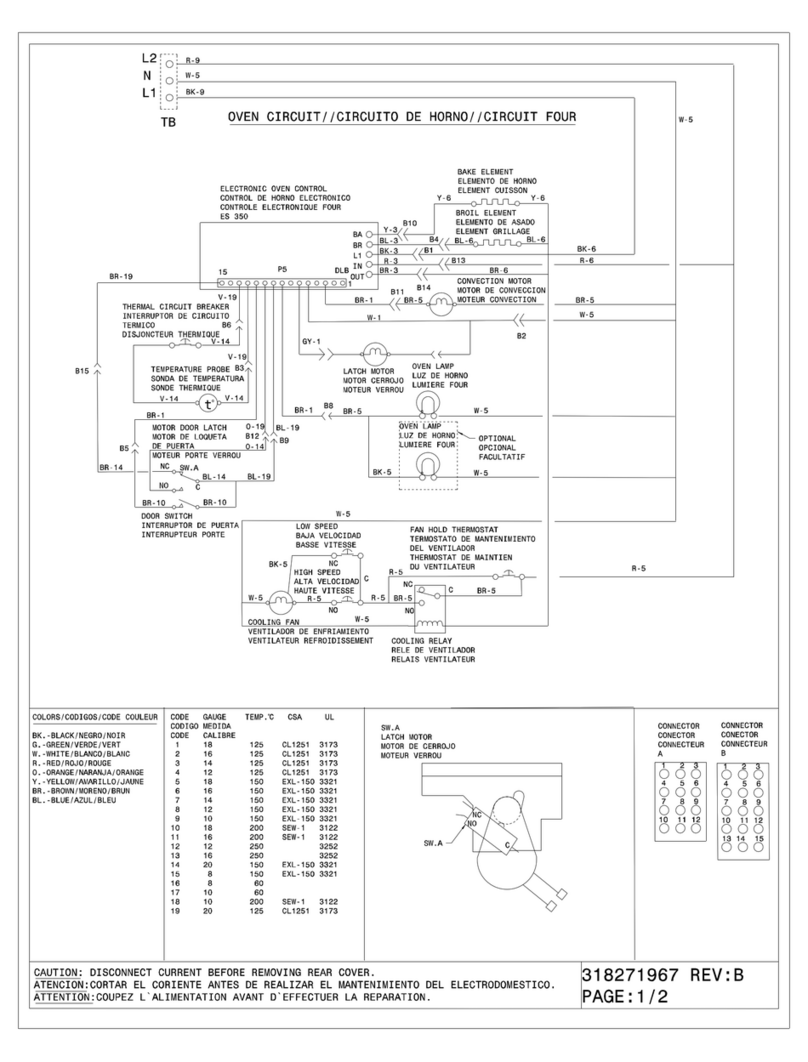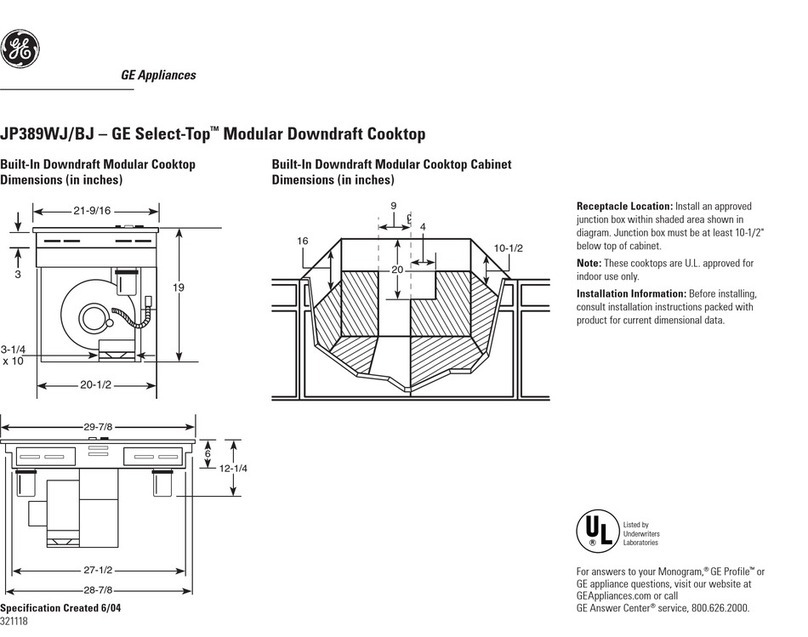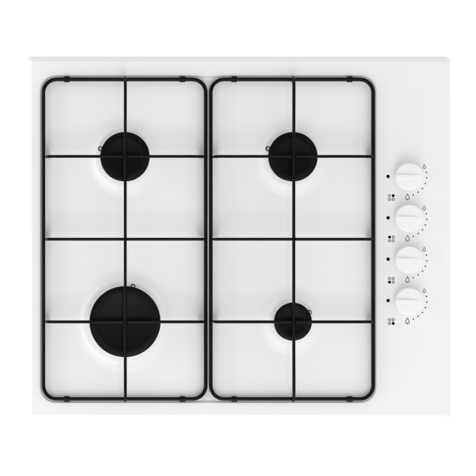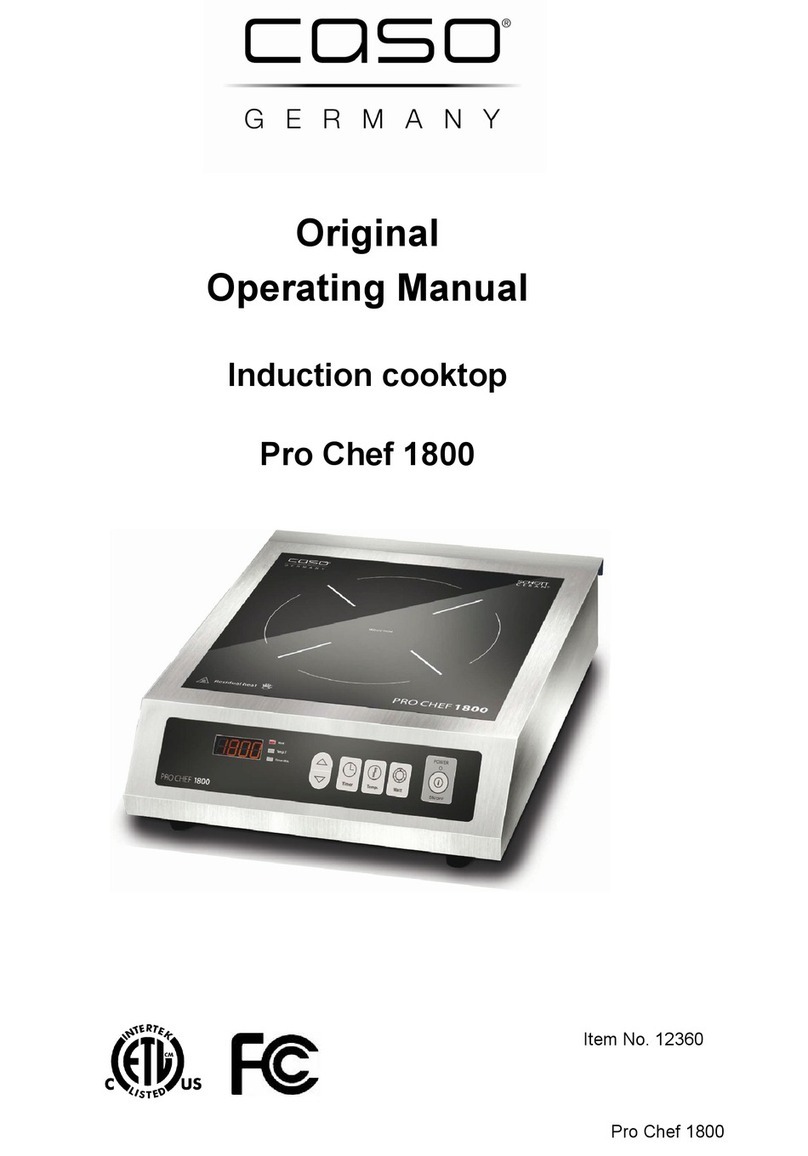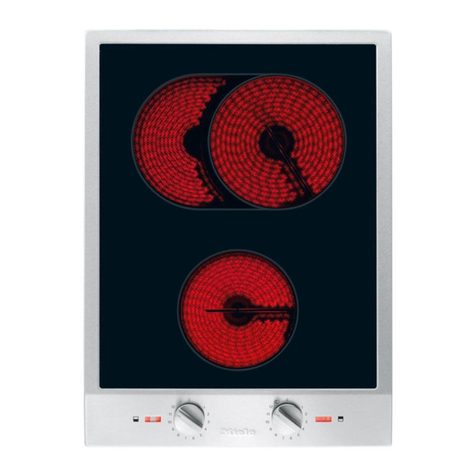Tips to Protect Your Cooktop
Using Your Cooktop
Ventilation System
#
#
€
Before first use, clean the cooktop. (See page 5.)
Make sure bottom of pan is clean before placing on cooktop.
Do not use a small pan on a large element. Not only does
this waste energy, but it can also result in spiltovers burning
onto the cooking area which requires extra cleaning.
€ Do not use non-flat specialty items that are oversized or
uneven such as round bottom
woks, rippled bottom and/or
oversized canners and griddles.
Do not cook foods directly on the
cooktop or use the cooktop as a
cutting board.
The built-in ventilation system removes cooking vapors,
odors and smoke from foods prepared on your cooktop.
€
Ove_ 1inch
Do not allow a pan to boil dry as this couId damage the
cooktop and the pan.
II,Do not slide heavy metal or glass pans across the surface
since these may scratch.
Do not use a trivet, fire ring or metal stand between pans and
the elements.
# Do not use foil or foil-type containers. Foil may melt onto
the glass. If metal melts on the cooktop, do not use. Call
an authorized Jenn-Air Servicer.
# Do not allow plastic, sugar or foods with high sugar content
to melt onto the hot cooktop. Melted materials left on the
cooktop can cause permanent damage.
The pop-up fan control is located at the front of the air grille.
To operate the ventilation system, Air Grille
push the knob down to pop it up.
Turn the knob clockwise unfit it
stops for low fan speed. The fan can
be set at any speed between low and
high by turning the knob counter-
clockwise toward the OFF position.
The fan can be used to remove strong
odors from the kitchen as when
chopping onions near the fan. I/
Fan Control
Care and Cleaning of the
Ventilation System
#Air Grille: The air grille lifts off easily by grasping the
opening at the rear of the grille. Wipe clean or wash in
dishwasher or sink with mild household detergents. To
prevent scratching the surface, do not use abrasive
cleaners or scrubbing pads.
Filter: Turn off ventilation system before removing. The
filter is a permanent type and should be cleaned when
soiled. Clean in sink with warm water and detergent or in
dishwasher.
If you accidentally melt these items on the cooktop, turn
control to low and immediately scrape the melted material
to a cooler area on the cooktop using a razor blade scraper
held carefully with a potholder. Turn element off, When
the element has cooled, scrape off the remaining soil and
clean as indicated on page 5.
€ Wipe the cooktop surface with a clean damp cloth or paper
towel before each use. Invisible grease spatters, water
spots, etc., can cause stains after the element is heated.
tIf a spillover occurs while cooking, immediately clean the
spill from the cooking area while it is hot to prevent a tough
cleaning chore later. Using extreme care, wipe spill with a
clean dry towel.
# Do not allow spills to remain on the cooking area or the
cooktop trim for a long period of time.
IMPORTANT: DO NOT OPERATE SYSTEM WITHOUT
FILTER. Filter shouId always be placed
at an angle. As you face the front of the
cooktop, the bottom of the filter should
rest on the ledge on the fight side. The top
of the filter should rest against the left
side. There are also ledges on the front
and rear sides for the filter to rest. (Note:
If filter is flat against the fan wall, ven-
tilation effectiveness is reduced.)
€ Ventilation Chamber: This area, which houses the filter,
should be cleaned in the event of spills or whenever it
becomes coated with afilm of grease. It can be cleaned with
paper towel, damp cloth, or sponge and mild household
detergent or cleanser.
# Do not use abrasive cleansing powders or scouring pads
which will scratch the cooktop.
l, Do not use chlorine bleach, ammonia or other cleansers not
specifically recommended for use on glass-ceramic.
